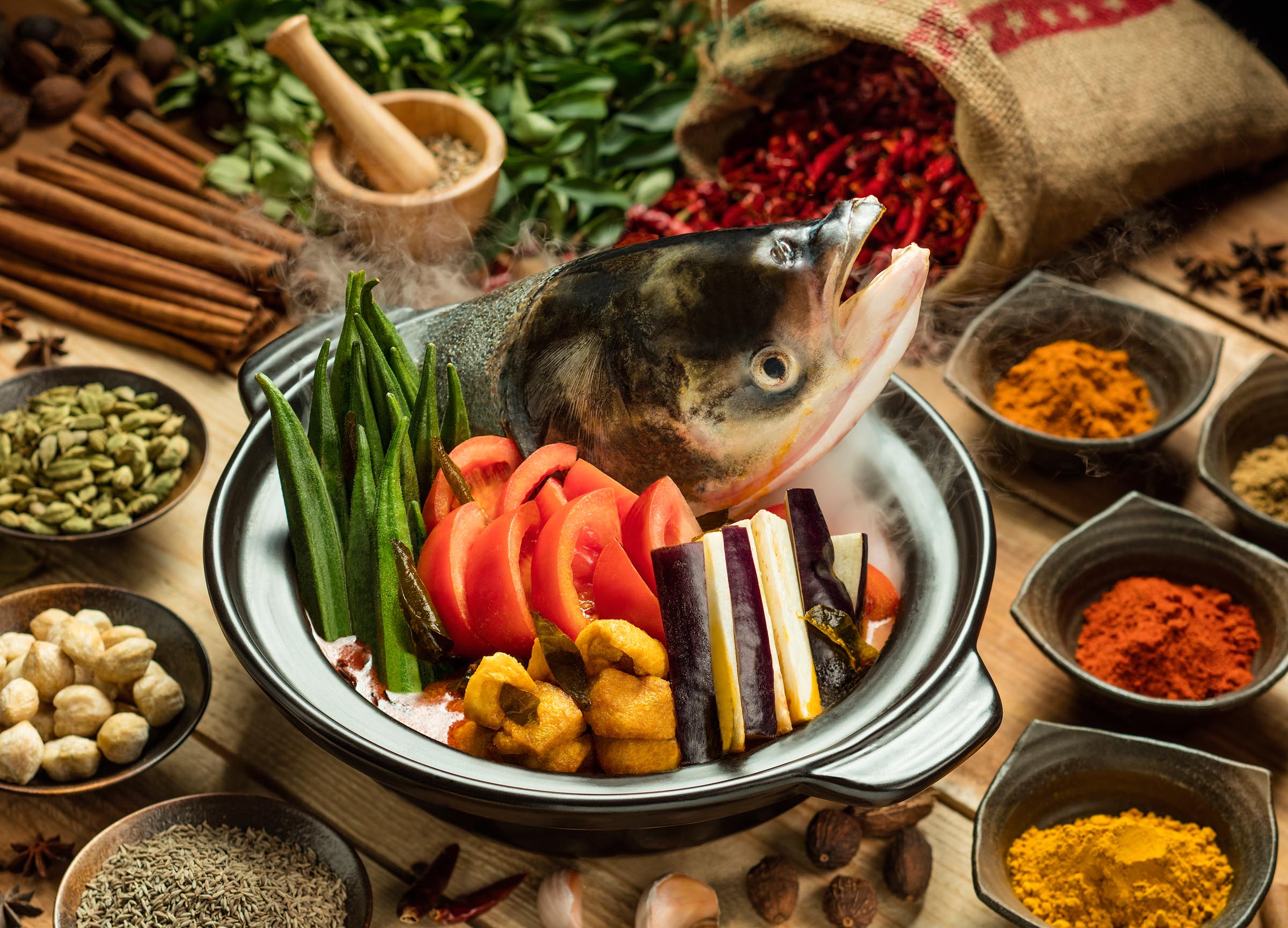
I suppose that for many living outside of Asia the idea of diving into a bowl of soup in which the eyes of a big fish are staring back at you would not be too appetizing. However, for many people in this part of the world it is extremely desirable and perhaps a requirement.
Having lived in Asia now for close to 25 years I have grown accustomed to this style of eating. In fact if a fish arrives without the head still intact I feel like there is something wrong.
For the photo above we spent quite a bit of time assembling all the ingredients that go into making this Fish Head Soup. The image was created for a restaurant called The Golden Pavilion located in the City of Dreams resort in Macau. The restaurant features a variety of Southeast Asian cuisines.
To achieve this image I had to work closely with the chef to make sure that ingredients in the soup looked fresh and tasty and then surrounded the bowl with a variety of other ingredients that go into making the soup broth.
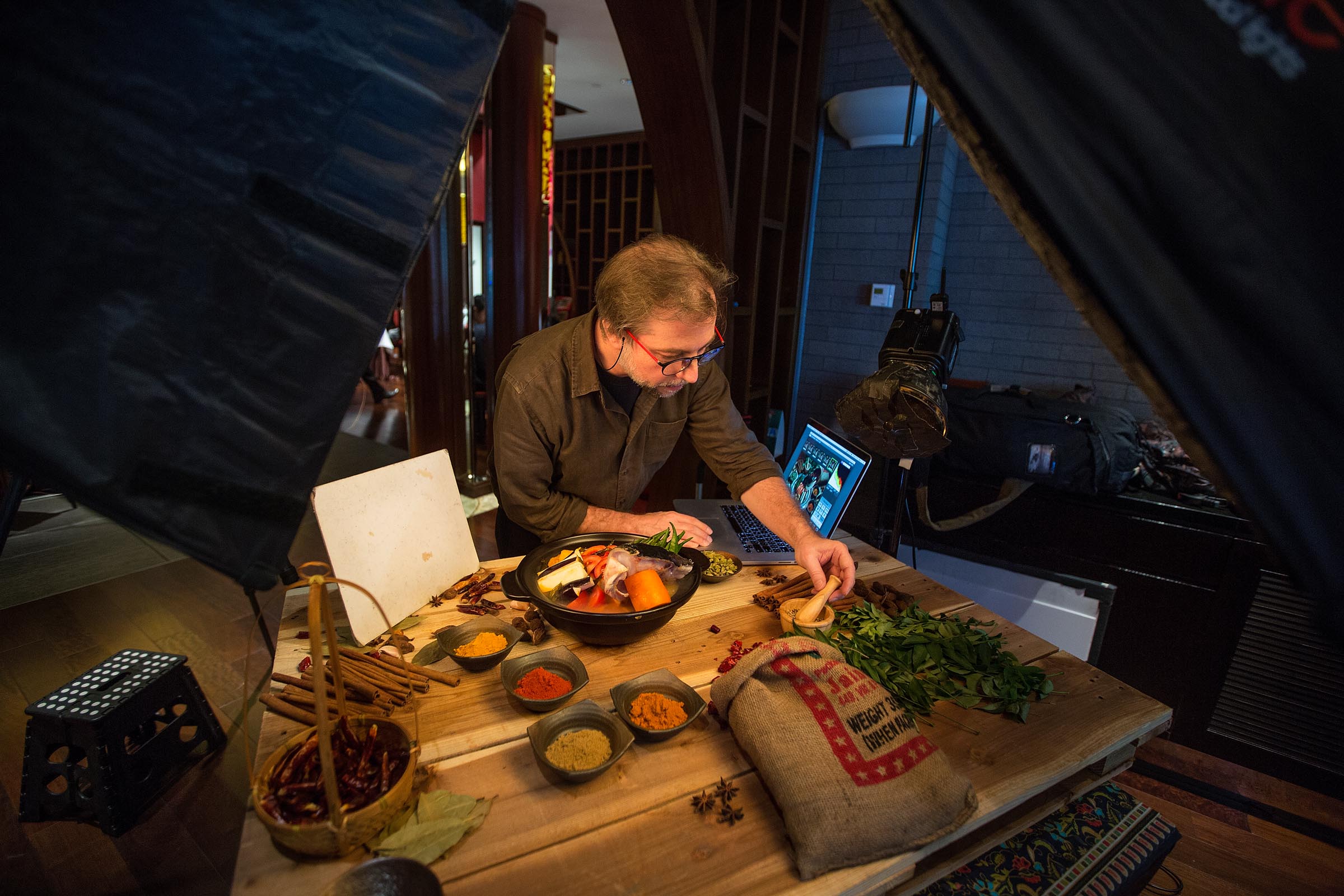
It’s a painstaking process to get all the elements into the image and composed in such a way that they add to the image both visually as well as provide a bit of information to the viewer.
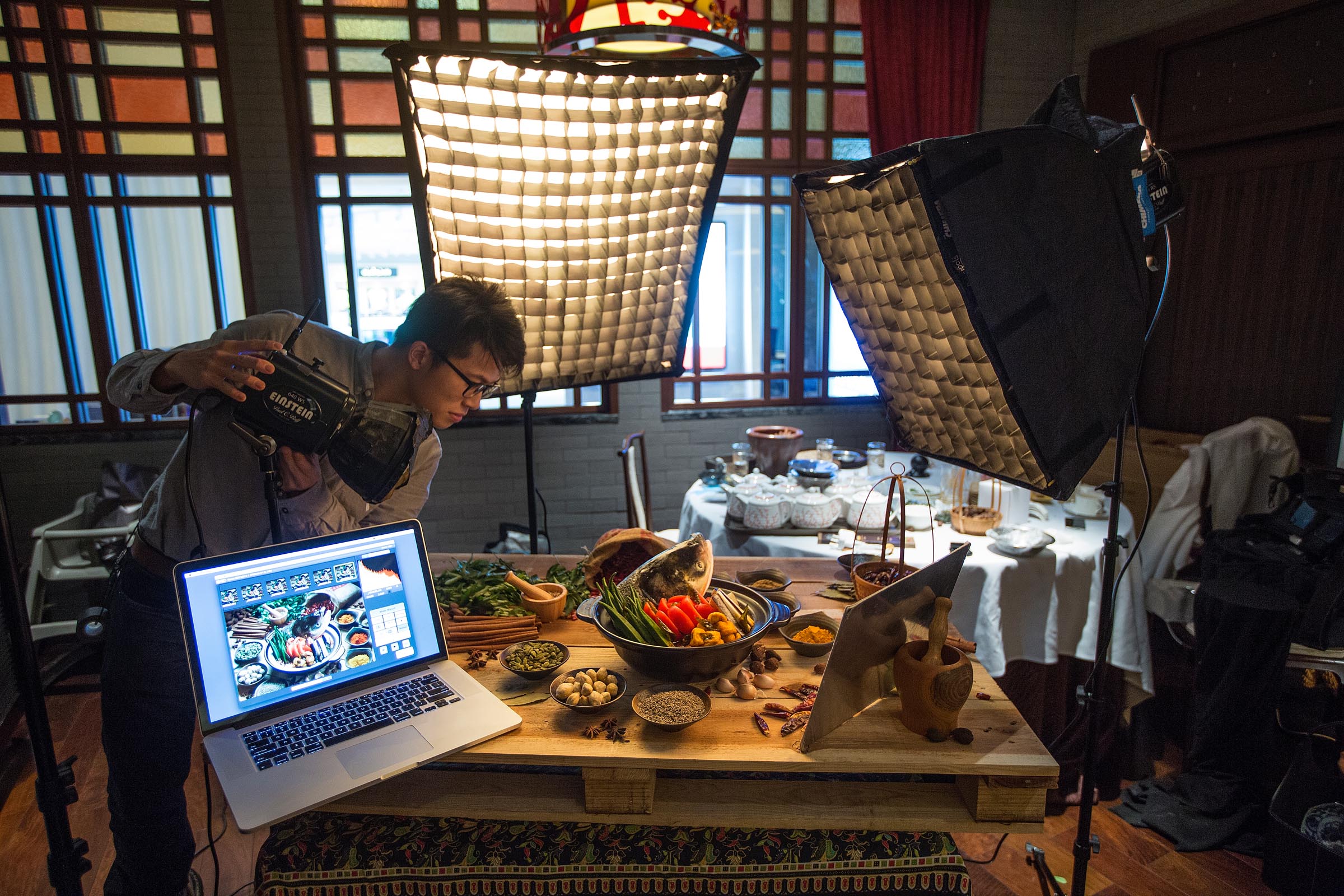
Getting the lighting just right is the other challenge. Especially when dealing shiny glistening objects. Food almost always looks best when lit from behind. By lighting from behind it brings out the textures of the food and can make it look fresher and gives the image more depth. Sometimes this technique doesn’t work out so well when there is too much reflection. When faced with such a situation the lights need to be moved or adjusted until the desired affect is achieved. For some food shots I may incorporate a spot light such as the one my assistant, Sing, is adjusting in the photo above.
So for the final image we ended up three Eistein strobe heads with two fitted with softboxes and the third with a 3 degree honeycomb grid. A white reflector card was positioned on the right side of the scene to help fill in some of the shadows.
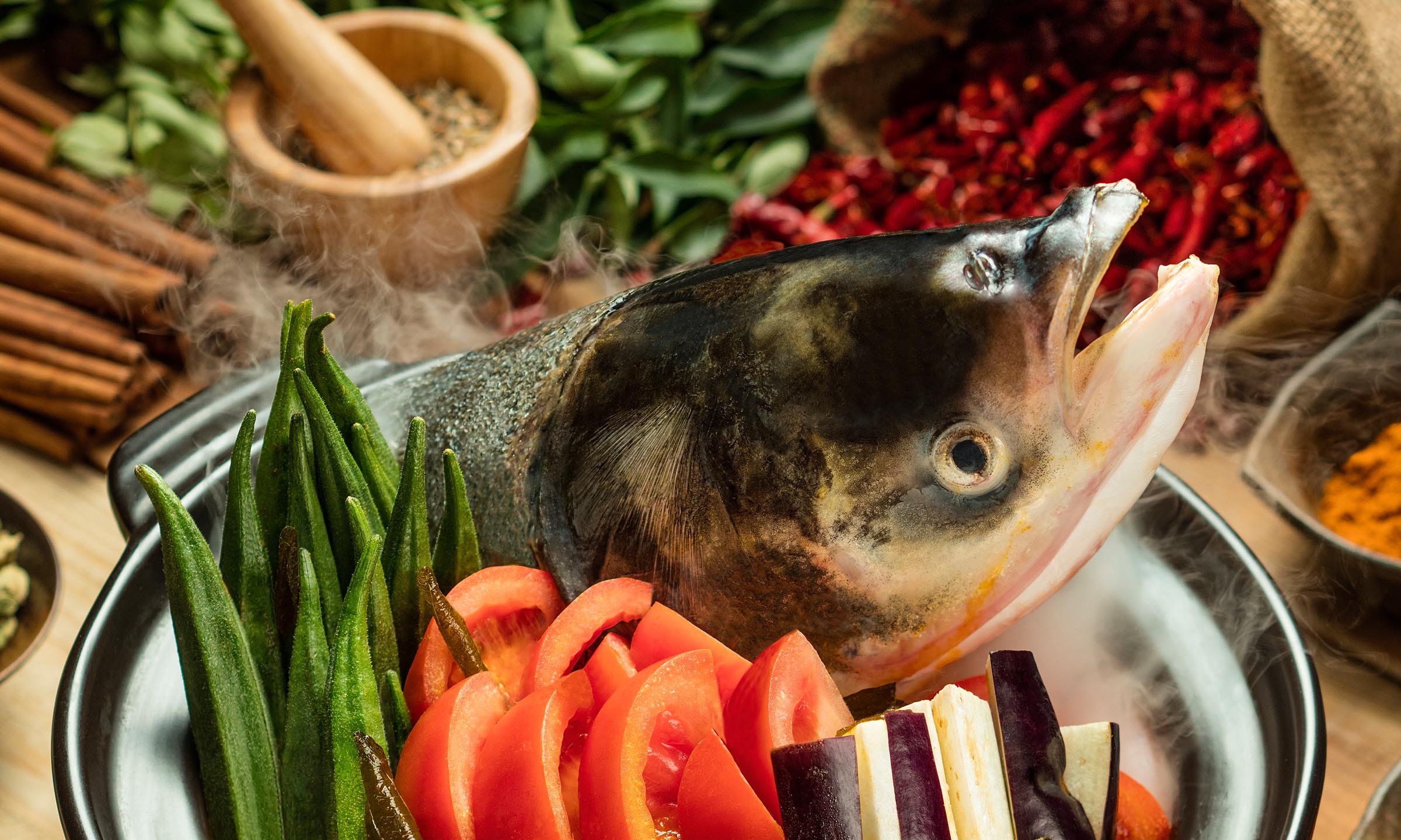
The final step was to add steam to give the appearance that this dish is hot and ready to be consumed. Actual steam is very hard to capture in a photograph unless there is a lot of it. To recreate steam there are a number of techniques you can use but the easiest is to use dry ice. By placing a couple chunks of dry ice in various parts of the bowl and the adding hot water a steam-like vapor will rise from the bowl. It’s then necessary to blow or fan the dish to make the vapor rise as dry ice vapor wants to settle and flow out of the bowl like a witches brew.
That’s it. Anybody hungry?
Bon Appétit!
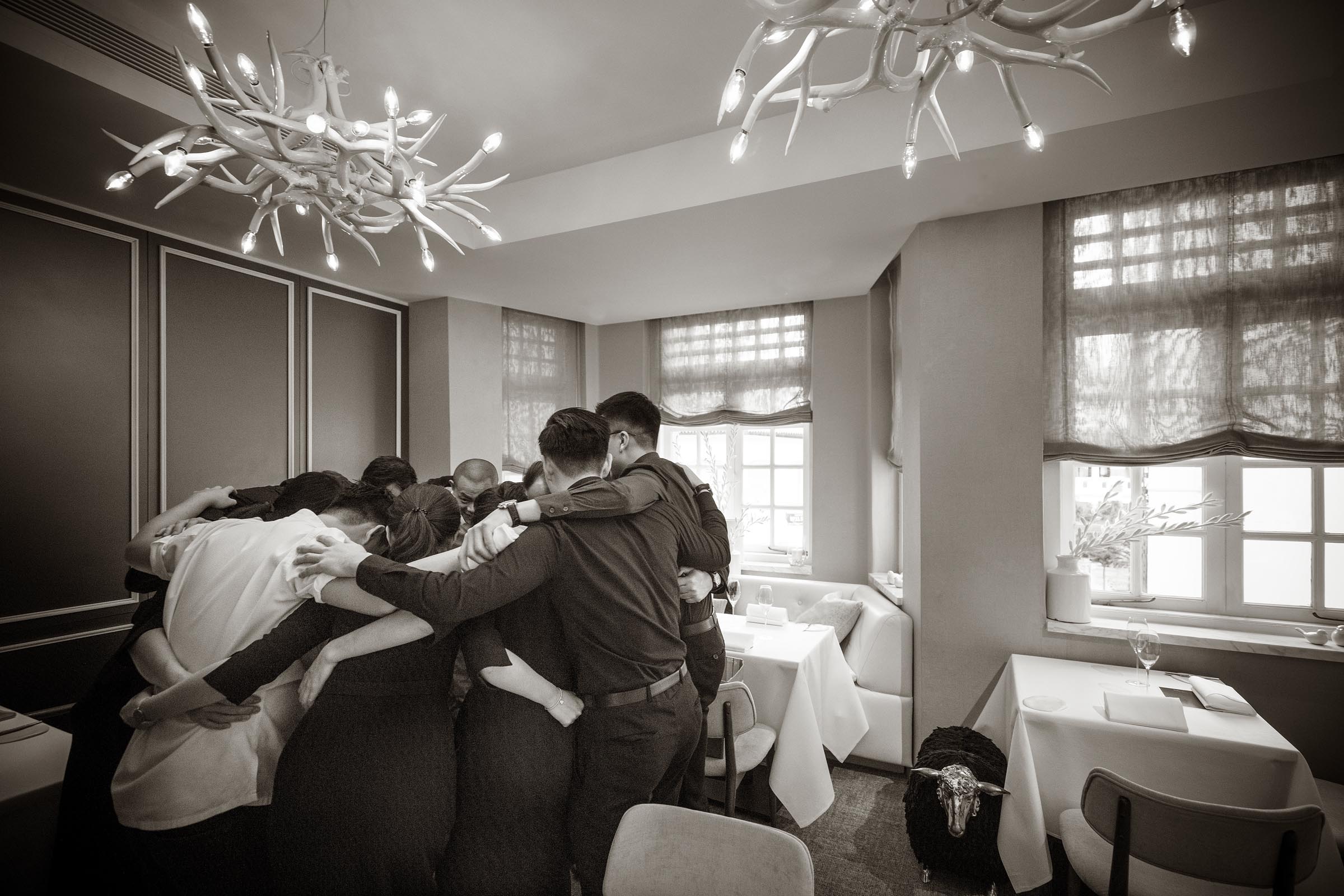
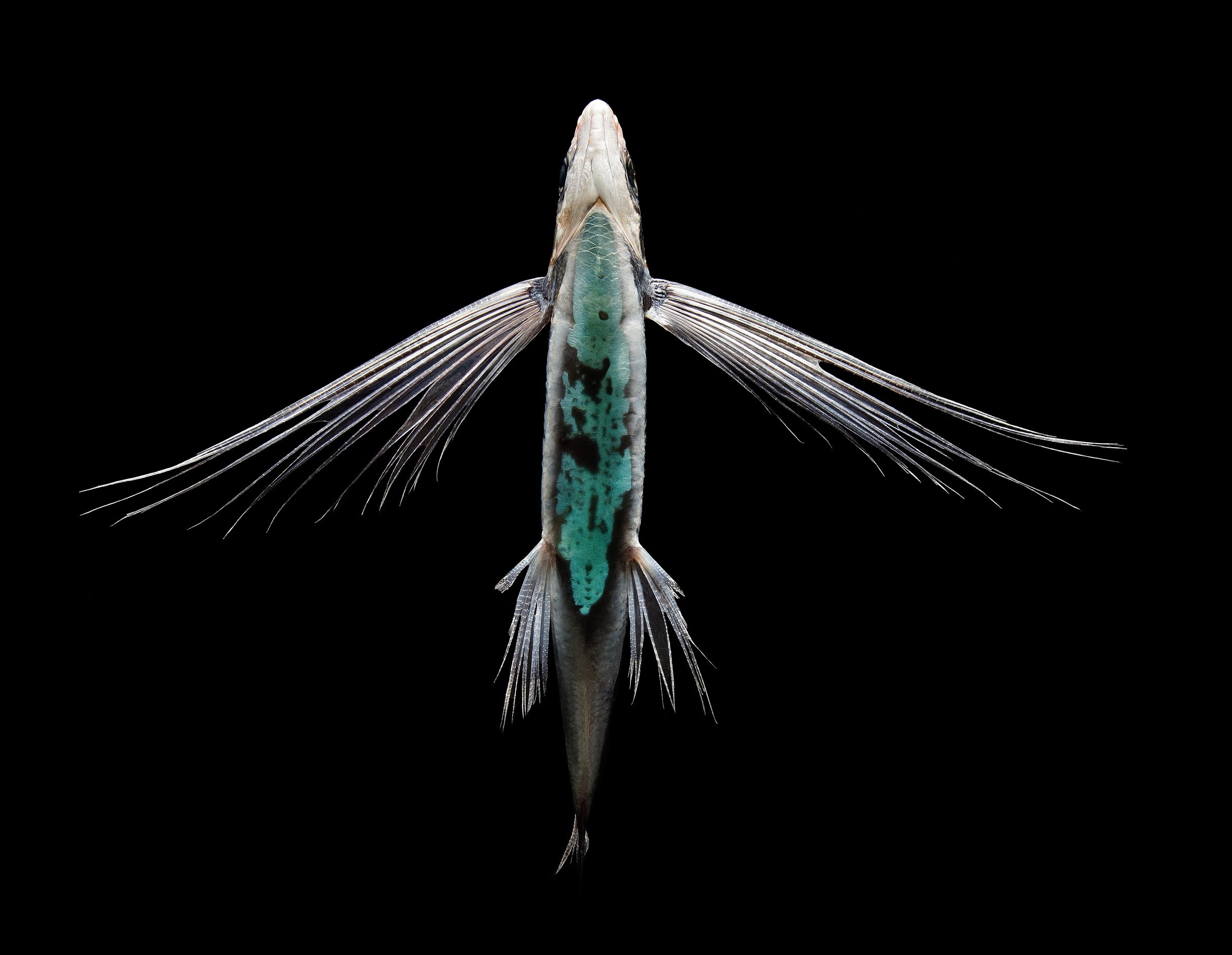
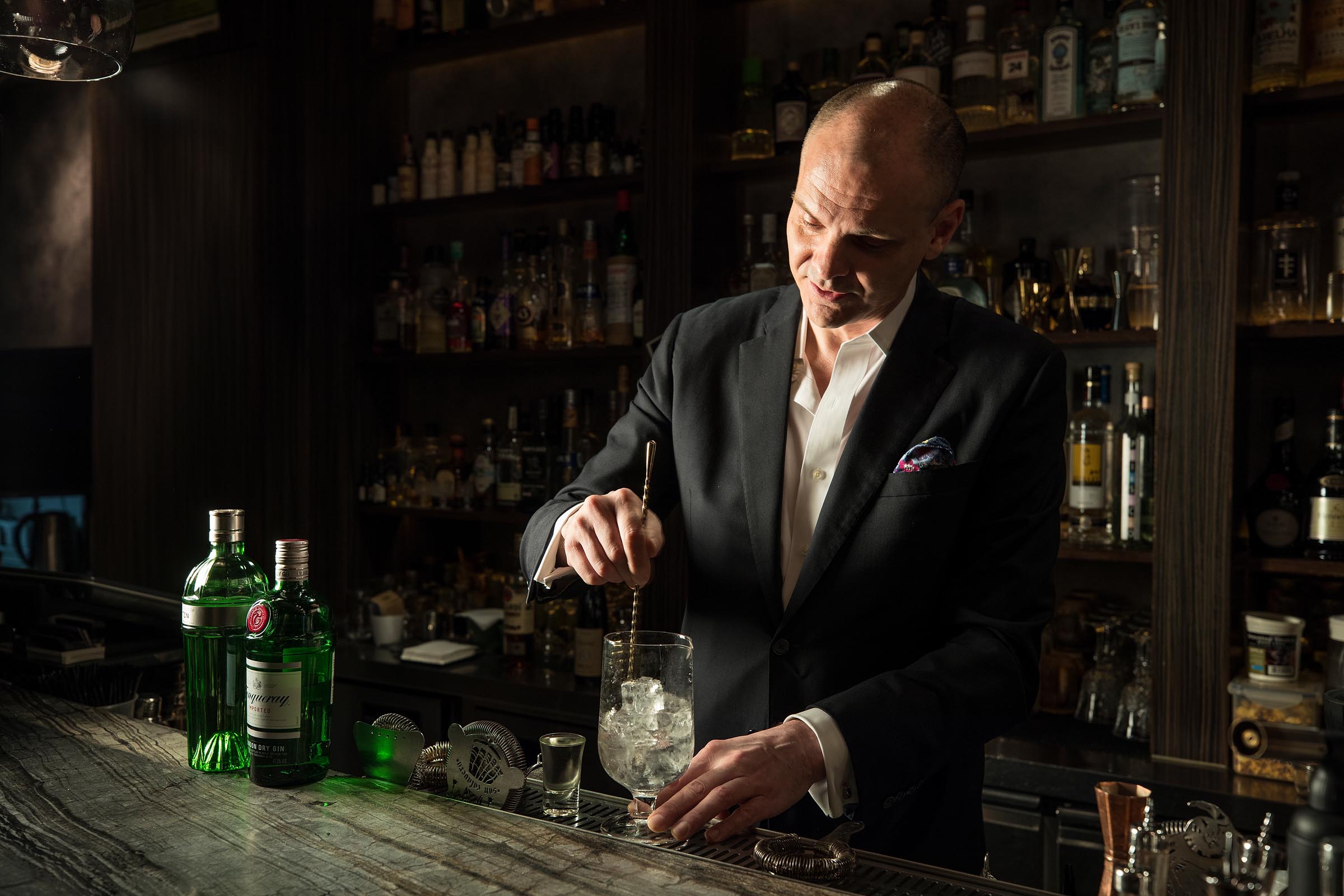
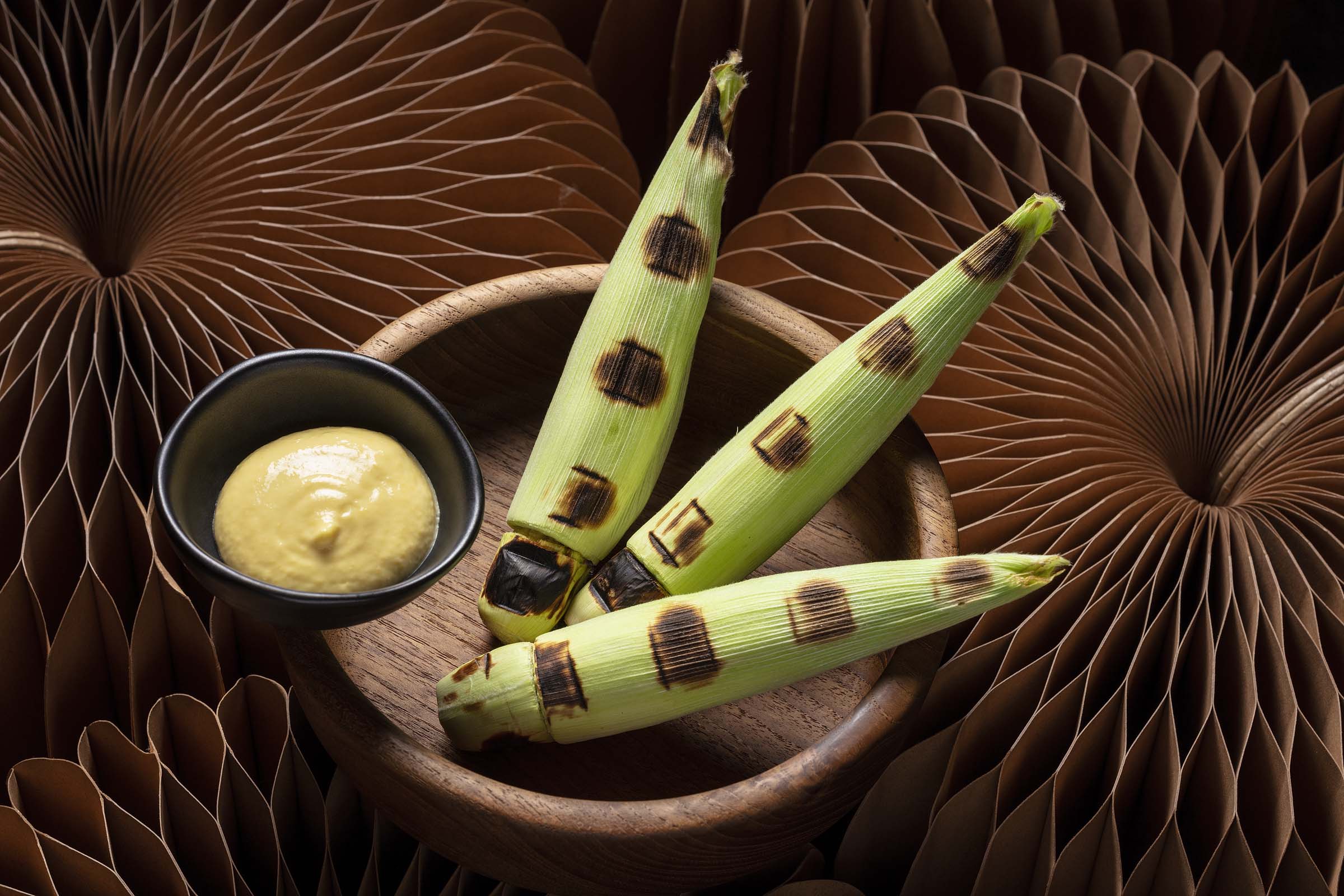
That’s a serious amount of work for a portrait of a fish head! I hope he/she appreciates it 🙂
I found the technical explanations interesting–it would be fun to see sometime try to duplicate your results just by following the instructions ha!!